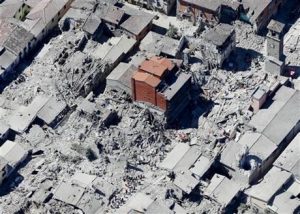
Italy’s earthquake was a lot weaker than the one in Myanmar, but it did far more damage because it happened at a shallower depth. The Associated Press explains the difference between shallow and deep earthquakes.
___
EARTHQUAKE MAGNITUDE IS MORE THAN JUST A NUMBER
A quake’s destructive force depends not only on its strength, but also on location, distance from the epicenter and depth. Quakes can strike near the surface or deep within the Earth. Most quakes occur at shallow depths, according to the U.S. Geological Survey. Italy’s quake was very shallow, originating between 2 1/2 miles (4 kilometers) and 6 miles (10 kilometers) underground, according to Italy’s geological service and the USGS. The magnitude measurements also varied slightly — between magnitude 6 and 6.2. By contrast, the 6.8 quake in Myanmar was deeper — at 52 miles (84 kilometers), which is considered an intermediate depth.
___
SHALLOW QUAKES ARE LIKE ‘A BOMB’
Shallow quakes generally tend to be more damaging than deeper quakes. Seismic waves from deep quakes have to travel farther to the surface, losing energy along the way. Shaking is more intense from quakes that hit close to the surface like setting off “a bomb directly under a city,” said Susan Hough, a USGS seismologist. The Italy quake devastated three towns, home to medieval structures built before there were building codes. Many buildings were made of brick or stone, which can fall apart during shaking. “They’re very quaint, but they don’t withstand earthquakes very well,” Hough said.
___
DEEP QUAKES STRIKE FAR AND WIDE
While deep quakes may be less damaging, they’re usually more widely felt. Most of the destruction in the Myanmar quake was centered in the tourist town of Bagan where nearly 100 brick pagodas dating back centuries were damaged. At least four people were killed in the Myanmar temblor, which also shattered ancient Buddhist pagodas.
Note: The above post is reprinted from materials provided by The Associated Press. The original article was written by ALICIA CHANG.










